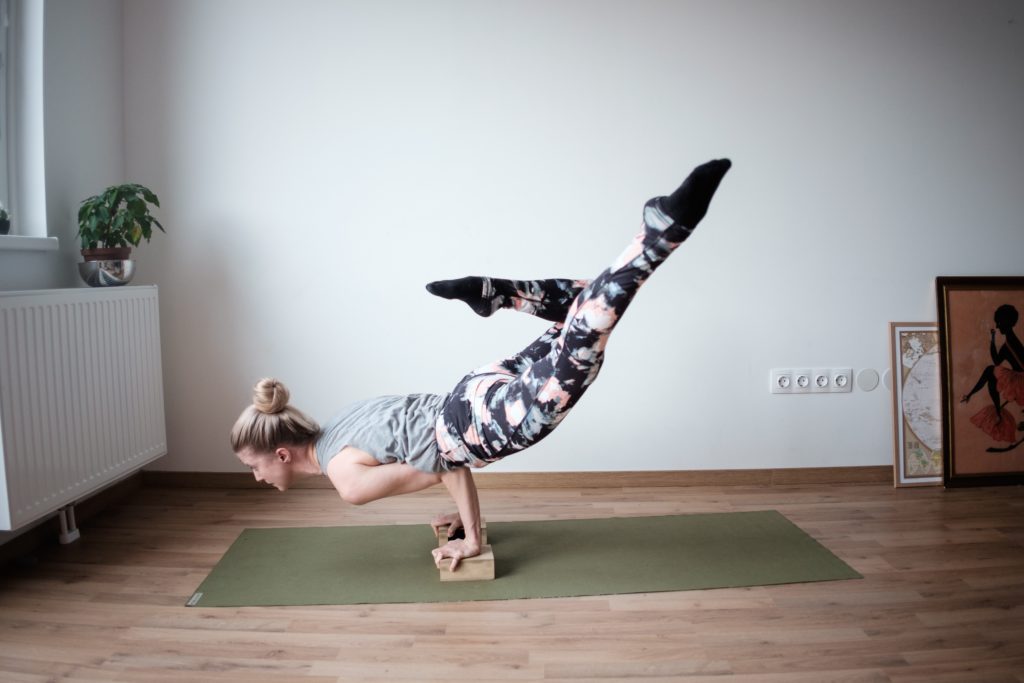Depending on where you live, or where you’re traveling, it’s not always possible to attend classes. Luckily, the beautiful thing about yoga is that you don’t need anything but yourself to practice. (That’s right, you can flow on your carpet, towel or even hard wood floors).
Building a home practice is a great way to deepen your connection to your body and allow yourself to grow by practicing daily.
The only problem will self practice is the lack of motivation that a class can sometimes give. So, here are our 5 tips for staying motivated and setting up the perfect home practice.
1). Create a Comfortable Spot
Choose a space that is quiet and comfortable. It helps if you’re practicing in the same space everyday so that you’ll associate this space with your mat time. Make sure you have some yoga essentials close by, like a yoga block (or any book) a mat, towel or something to protect your knees. Try creating a space close to a wall so you can practice inversions and more advanced poses.
If you’re traveling, or practicing in a small space, try getting into the habit of bringing something into the area to shift the energy to create a practice area. This way, whenever you bring that extra something into your space you’ll associate it with mat time. This could be anything from setting a crystal at the end of your mat, or using incense and music to keep you in the mood.
2). Plan Ahead
This really depends on the person, some days you might be fine to just throw on some music and flow in a creative sequence, but other days you might need some extra support. It’s good to get some guidance from the many YouTubeteachers or pre plan or your own sequence before you practice.
There are benefits to all options, planning your own sequence will grow your understanding of transitions while free flowing will allow you to channel a more “intuitive” practice, creating and flowing as you feel fit. Following a YouTube teacher is also a great way to start to grow your own practice by getting familiar or comfortable with different poses and different yoga styles.
Extra Tip: If you’re using YouTube, try to stick to one teacher a week, this way you’ll create a connection with them and give the illusion that you’re attending a studio class. Changing teachers weekly will help you develop your own style and get a feel for what you like.
3). Set an Intention before Class
Not matter how you’re leading your own self practice it’s important to set an intention before each class. This can be an affirmation, such as “Creative energy flows through me and leads me to new and brilliant ideas.” or “money always comes to me in the way that I want,” or even “I am beautiful, strong and worthy.” You can also just tell yourself something you’d like to focus on during class, like breathing, or dedicate your practice to a specific goal, yourself or even another person.
4). Inversions
Try and go upside down at least once during your practice. Don’t panic, this doesn’t necessarily mean that you’ll be flipping up into headstands and pincha everyday BUT getting the head below the heart has many powerful benefits. Remember, an inversion a day keeps the doctor away! New to yoga? Try dolphin pose, shoulder stand or down-ward dog using a wall!
Extra Tip: Remember to breathe through difficult poses instead of holding your breathe.
5). Remember to always Savasana
Isn’t this why we practice? Making your way down into Savasana is the art of the practice. While lying in corpse pose may seem easy, sometimes it can be the most difficult yet rewarding. To try and slow down your mind, focus on each body part and deeply relax. Once you get better and better at finding that deep relaxation, you’ll never want to skip Savasana again.
